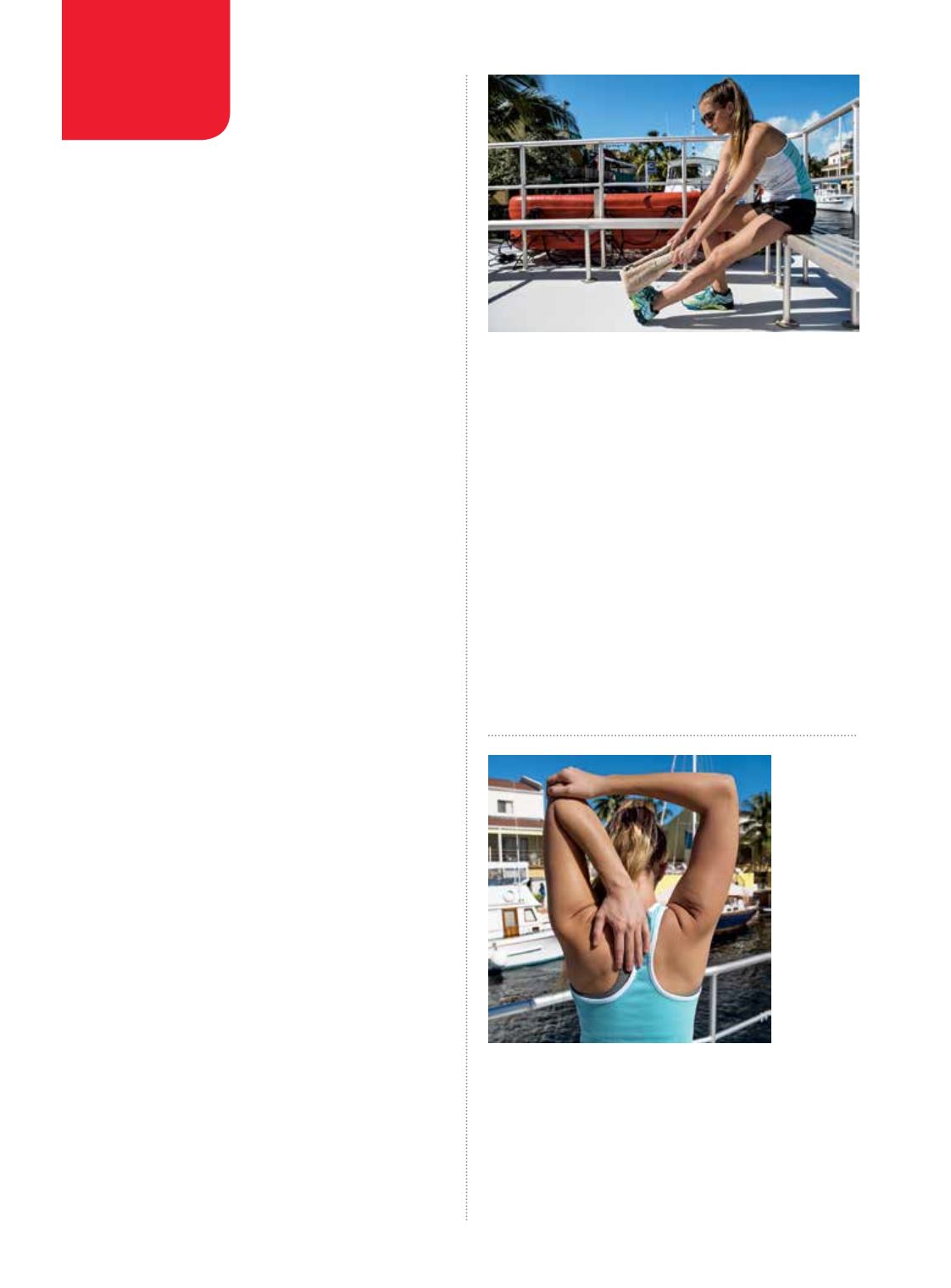

CALF STRETCH
Calf cramps are a common annoyance in diving; the calf muscles
(gastrocnemius and soleus) are primarily responsible for pointing
your toes during finning. Tight calf muscles can lead to cramping,
so stretch your calf muscles before you dive.
If you are already wearing fins, stretch your calves just like you
learned in your open-water class:
1. Straighten your leg.
2. Grab the blade of your fin.
3. Pull the blade back toward your knee until you feel the stretch,
and hold this position for 30-60 seconds.
4. Repeat on the opposite side.
If you are not wearing fins:
1. Sit with one leg straight (flat on the ground or seated on
a bench).
2. Loop a towel under your toes.
3. Pull until you feel the stretch, and hold this position for
30-60 seconds.
4. Repeat on the opposite side.
BACK SCRATCHER SHOULDER STRETCH
You don’t want the first time you reach overhead to be when you
need to reach a valve or locate your regulator.
1. Extend one arm straight overhead.
2. Bend your elbow, and reach down your spine.
3. Grasp the bent elbow with the opposing hand.
4. Gently pull your elbow, and hold this position for 30-60 seconds.
5. Repeat on the opposite side.
Tip:
Keep your head up.
The
DAN
Guide to Healthier Diving
34
|
WINTER 2016
DIVE
FITNESS
D
ivers tend to be very invested
in their gear. They clean masks,
adjust straps, check computers,
test regulators and shuffle
weights prior to taking giant
strides into the underwater
realm. It is important that divers also remember to
prepare their most important dive gear: their bodies.
Before you dive, take a moment to inventory your
body. If you were sedentary on the ride out to the
dive site your heart rate is probably near resting, so
it is not circulating much oxygen to your muscles.
Your muscles may be tight, which limits mobility.
Your joints might be creaky, limiting comfort of
movement. If you dive right in, you risk cramping
up or starting the dive feeling less than optimal.
You have invested a lot in your training, planning
and preparation, so take a few minutes to prepare
your body.
Diving is a physical activity. A proper warm-
up and stretching routine is important for both
enjoyment and safety during dives. A smart
stretching session can boost circulation, lubricate
joints and warm up muscles. It will allow you to don
your gear and enter and exit the water with greater
ease. It may also allow you to acclimate to the
underwater environment more quickly.
A progressive warm-up gradually increases the
heart rate and dilates the blood vessels, which
promotes oxygenation of muscle tissue. Elevated
muscle temperature optimizes efficiency and
flexibility. A predive stretch reduces stress on muscles,
tendons and joints and increases range of motion.
Before you dive, spend five to 10 minutes to
complete a few rounds of the exercises below. Pay
attention to how your body feels, and focus on any
areas that seem tight.
PREDIVE WARM-UP
By Jessica B. Adams, Ph.D.,
and Jaime B. Adams, M.S.
Photos by Stephen Frink
















